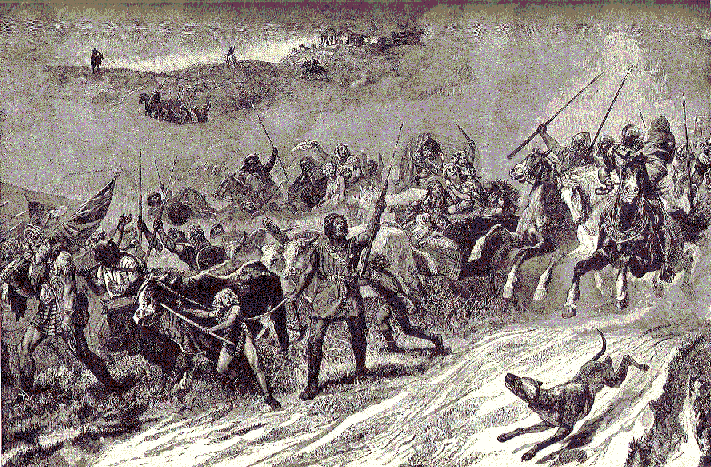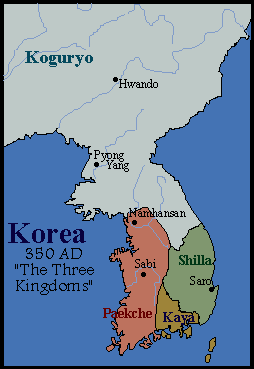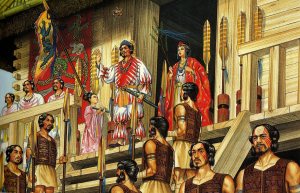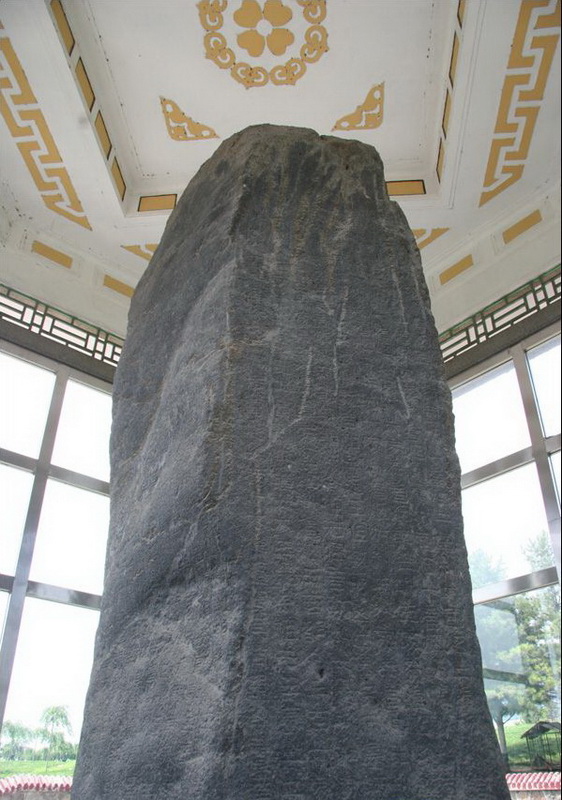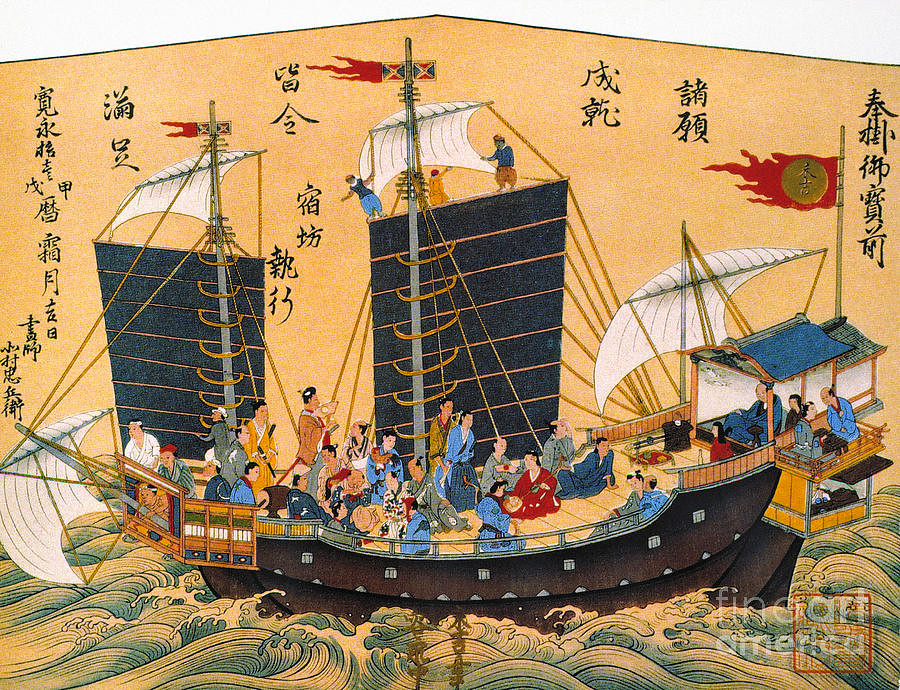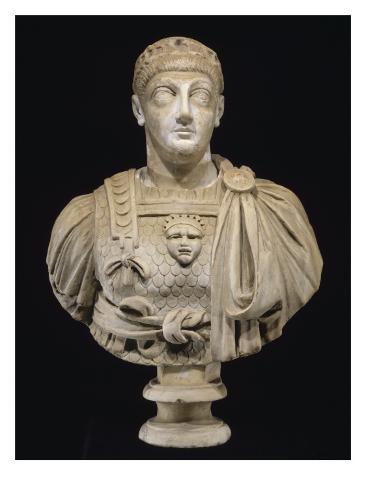Book XI: The Great Dragon of the North
Upon arrival in Chang'an, the prime minister Wang Meng experienced a severe bout of illness, but which fortunately passed, keeping him bedridden for little over a month[38]. During Wang Meng's official tenure as Prime Minister, Qin policy became even more aggressive. In the Autumn of 376, Fu Jian launched a major attack on Later Liang. Zhang Tianxi's generals were largely dissatisfied by their Prince's installation of young favourites in his court regime. Those who didn't join their peers in defecting zschlowiyn vyl[39] were rapidly defeated. Later Liang resistance collapsed in less than a month, and the kingdom was annexed into Great Qin.
Only two months after the conquest of Later Liang, Fu Jian launched a campaign against the Dai kingdom of the Tuoba (a clan of the Xianbei), which was embroiled in turmoil after the assassination of Tuoba Shiyijian by his son Tuoba Shijun. The campaign was rapid, perfectly timed to take advantage of the instability of the Dai state. Fu Jian did show some mercy, allowing Tuoba Gui (Tuoba Shiyijian's grandson) to remain under the care of Xiongnu chief Liu Kuren and was groomed to become the eventual heir to the Dai throne, whose task it would be to maintain the loyalty of the Dai people to Great Qin.
In 378, Fu Jian sent his son Fu Pi along with Murong Wei and Gou Chang to attack the important Jin border city of Xiangyang. At Gou's suggestion, Fu Pi ordered that the city be put under siege to minimise troop losses. Whilst Fu Jian was unhappy about the slow pace, Wang Meng reasoned with him that the less soldiers lost now would make it significantly easier to consolidate gains for the next round of conquest[40]. Xiangyang fell in 380, followed quickly by Weixing. However, another army sent to support Fu Pi and led by Peng Chao was defeated by the Jin general Xie Xuan after capturing Pengcheng. The Great Qin forces were therefore forced to withdraw from that city.
In 380, Fu Luo (Fu Jian's cousin and the Gong of Xingtang), who felt insufficiently rewarded for his victories against Dai in 376, rebelled, but was quickly defeated and captured by general Lu Guang. Fu Jian followed Wang Meng's recommendation to bring the rebel back to Chang'an and have him executed in front of the courtiers, proof that even family weren't above punishment for treasonous acts[41].
As if an omen for the times of internal trouble that were yet to come, 382 saw a major locust infestation in You, Qing, Ji and Bing provinces. Although the Great Qin state responded with a relatively effective extermination campaign, it was nevertheless retroactively seen as an omen for the Great Xianbei Rebellion[42]. But in the latter half of 382, Fu Jian was preoccupied with planning for an attack on the Jin. Many of the major officials opposed the plan, but the Xianbei chieftain Murong Chui and the Qiang chieftain Yao Chang were enthusiastic about a large-scale campaign against the Jin. Wang Meng was a bit more measured. He was not opposed to another border war against Jin, but felt it should be limited to a seizure of cities along the Yangtze tributaries, which he saw as the natural border with Jin.
In 383, Fu Jian finally launched his great campaign against Jin, with the armies under the personal command of Wang Meng[43]. Great Qin forces seized the city of Shouyang, but stalemated at the Fei River, a tributary of the Yangtze. Opposing the Great Qin forces was Liu Laozhi and the Jin harjatuga Xie Xuan[44]. After a number of indecisive skirmishes, peace was concluded, with Great Qin retaining Shouyang and the rest of the captured territories[45]. Also in 383, Fu Jian sent Lu Guang on a campaign through the Yumen Pass to Xiyu, where some of the kingdoms had submitted to the Great Qin, but some had not. Lu's campaign would last several years and be quite successful in establishing Great Qin dominance of the area, although this would not last much longer than Fu Jian's reign.

Skirmishes at Fei River
In 386, concerned at the increasing importance of Xianbei and Qiang in the imperial court, Wang Meng attempted to 'clean house' having spies search for evidence regarding disloyalty within the Murong clan in particular. Seizing correspondence between members of the family, Wang exposed the disloyalty of Murong Chui, Chui's son Murong Bai, his brother Murong De and Murong Hong (brother of Murong Wei). Despite Wang's suspicion, Murong Wei evaded Fu Jian's wrath by convincing the Tian Wang that he was ignorant of his family's plotting and that his loyalty was absolute. In reality, Murong Wei was instrumental in facilitating the escape of the Murong clan, warning his kin in advance of Fu Jian's arrest orders. Murong Chui, Murong De and Murong Hong all escaped east to try and reestablish Yan, whilst Murong Bai was executed and his head displayed in Luoyang. The Murong clan also found an ally in Zhao Bin, a Dingling chieftain. Rather than carving out one large kingdom, the rebels, whilst loosely associated, carved out their own individual fiefs. This allowed the Great Qin loyalist forces to crush the rebels individually. Murong Chui was the last to fall, having a last stand at Wujiang Mountain. The campaigns against the rebels lasted several years, coming to an end in 391. Although Murong Wei had managed to survive the turmoil (mainly through sycophancy), he was put to death after attempting to kill Wang Meng in a drunken rage at a court feast in 393.
Fu Jian would pass away in 399. Although he hadn't fulfilled his dream of uniting China under his banner, he left behind a state that truly deserved the moniker of 'Great Qin', one which had been secured against virtually all internal and external threats.
===
[38] Historically, Wang Meng died of this illness, which caused Former Qin (Great Qin ITTL) to go without his talents, a major reason for its collapse IOTL.
[39] Gothic equivalent of en masse, from 'viele' (modern German for 'many') and 'zschlowiyn', a Gothic word I invented to be the modern form of 'Slavic'.
[40] IOTL, without Wang Meng around, Fu Jian sent a letter to Fu Pi telling him to storm the city, and to commit suicide if he hadn't achieved the objective by the end of Spring 379. Luckily, he did capture the city in Spring 379.
[41] Fu Luo was merely exiled in OTL.
[42] IOTL, Wang Meng's death led to a decline in the honesty and efficiency of the bureaucracy, which began to report what Fu Jian wanted to hear. This included claiming crop yield surpluses DESPITE a locust infestation, which plainly wasn't possible.
[43] IOTL, Fu Rong led the armies (under duress).
[44] In modern Gothic, 'harjatuga' (war leader) becomes a term akin to 'generalissimo', i.e. implying that one is the paramount general.
[45] IOTL, the Battle of Fei River was a crushing defeat for Former Qin, which directly lead to their collapse and balkanisation.
xiǎo dòng bù bǔ, dà dòng chī kǔ - "Destroy the seed of evil, or it will grow up to your ruin"
Jiŭ fā xīn fù zhī yán - "In wine, there is truth"

Fu Jian in battle dress
Jiŭ fā xīn fù zhī yán - "In wine, there is truth"

Fu Jian in battle dress
Upon arrival in Chang'an, the prime minister Wang Meng experienced a severe bout of illness, but which fortunately passed, keeping him bedridden for little over a month[38]. During Wang Meng's official tenure as Prime Minister, Qin policy became even more aggressive. In the Autumn of 376, Fu Jian launched a major attack on Later Liang. Zhang Tianxi's generals were largely dissatisfied by their Prince's installation of young favourites in his court regime. Those who didn't join their peers in defecting zschlowiyn vyl[39] were rapidly defeated. Later Liang resistance collapsed in less than a month, and the kingdom was annexed into Great Qin.
Only two months after the conquest of Later Liang, Fu Jian launched a campaign against the Dai kingdom of the Tuoba (a clan of the Xianbei), which was embroiled in turmoil after the assassination of Tuoba Shiyijian by his son Tuoba Shijun. The campaign was rapid, perfectly timed to take advantage of the instability of the Dai state. Fu Jian did show some mercy, allowing Tuoba Gui (Tuoba Shiyijian's grandson) to remain under the care of Xiongnu chief Liu Kuren and was groomed to become the eventual heir to the Dai throne, whose task it would be to maintain the loyalty of the Dai people to Great Qin.
In 378, Fu Jian sent his son Fu Pi along with Murong Wei and Gou Chang to attack the important Jin border city of Xiangyang. At Gou's suggestion, Fu Pi ordered that the city be put under siege to minimise troop losses. Whilst Fu Jian was unhappy about the slow pace, Wang Meng reasoned with him that the less soldiers lost now would make it significantly easier to consolidate gains for the next round of conquest[40]. Xiangyang fell in 380, followed quickly by Weixing. However, another army sent to support Fu Pi and led by Peng Chao was defeated by the Jin general Xie Xuan after capturing Pengcheng. The Great Qin forces were therefore forced to withdraw from that city.
In 380, Fu Luo (Fu Jian's cousin and the Gong of Xingtang), who felt insufficiently rewarded for his victories against Dai in 376, rebelled, but was quickly defeated and captured by general Lu Guang. Fu Jian followed Wang Meng's recommendation to bring the rebel back to Chang'an and have him executed in front of the courtiers, proof that even family weren't above punishment for treasonous acts[41].
As if an omen for the times of internal trouble that were yet to come, 382 saw a major locust infestation in You, Qing, Ji and Bing provinces. Although the Great Qin state responded with a relatively effective extermination campaign, it was nevertheless retroactively seen as an omen for the Great Xianbei Rebellion[42]. But in the latter half of 382, Fu Jian was preoccupied with planning for an attack on the Jin. Many of the major officials opposed the plan, but the Xianbei chieftain Murong Chui and the Qiang chieftain Yao Chang were enthusiastic about a large-scale campaign against the Jin. Wang Meng was a bit more measured. He was not opposed to another border war against Jin, but felt it should be limited to a seizure of cities along the Yangtze tributaries, which he saw as the natural border with Jin.
In 383, Fu Jian finally launched his great campaign against Jin, with the armies under the personal command of Wang Meng[43]. Great Qin forces seized the city of Shouyang, but stalemated at the Fei River, a tributary of the Yangtze. Opposing the Great Qin forces was Liu Laozhi and the Jin harjatuga Xie Xuan[44]. After a number of indecisive skirmishes, peace was concluded, with Great Qin retaining Shouyang and the rest of the captured territories[45]. Also in 383, Fu Jian sent Lu Guang on a campaign through the Yumen Pass to Xiyu, where some of the kingdoms had submitted to the Great Qin, but some had not. Lu's campaign would last several years and be quite successful in establishing Great Qin dominance of the area, although this would not last much longer than Fu Jian's reign.

Skirmishes at Fei River
In 386, concerned at the increasing importance of Xianbei and Qiang in the imperial court, Wang Meng attempted to 'clean house' having spies search for evidence regarding disloyalty within the Murong clan in particular. Seizing correspondence between members of the family, Wang exposed the disloyalty of Murong Chui, Chui's son Murong Bai, his brother Murong De and Murong Hong (brother of Murong Wei). Despite Wang's suspicion, Murong Wei evaded Fu Jian's wrath by convincing the Tian Wang that he was ignorant of his family's plotting and that his loyalty was absolute. In reality, Murong Wei was instrumental in facilitating the escape of the Murong clan, warning his kin in advance of Fu Jian's arrest orders. Murong Chui, Murong De and Murong Hong all escaped east to try and reestablish Yan, whilst Murong Bai was executed and his head displayed in Luoyang. The Murong clan also found an ally in Zhao Bin, a Dingling chieftain. Rather than carving out one large kingdom, the rebels, whilst loosely associated, carved out their own individual fiefs. This allowed the Great Qin loyalist forces to crush the rebels individually. Murong Chui was the last to fall, having a last stand at Wujiang Mountain. The campaigns against the rebels lasted several years, coming to an end in 391. Although Murong Wei had managed to survive the turmoil (mainly through sycophancy), he was put to death after attempting to kill Wang Meng in a drunken rage at a court feast in 393.
Fu Jian would pass away in 399. Although he hadn't fulfilled his dream of uniting China under his banner, he left behind a state that truly deserved the moniker of 'Great Qin', one which had been secured against virtually all internal and external threats.
===
[38] Historically, Wang Meng died of this illness, which caused Former Qin (Great Qin ITTL) to go without his talents, a major reason for its collapse IOTL.
[39] Gothic equivalent of en masse, from 'viele' (modern German for 'many') and 'zschlowiyn', a Gothic word I invented to be the modern form of 'Slavic'.
[40] IOTL, without Wang Meng around, Fu Jian sent a letter to Fu Pi telling him to storm the city, and to commit suicide if he hadn't achieved the objective by the end of Spring 379. Luckily, he did capture the city in Spring 379.
[41] Fu Luo was merely exiled in OTL.
[42] IOTL, Wang Meng's death led to a decline in the honesty and efficiency of the bureaucracy, which began to report what Fu Jian wanted to hear. This included claiming crop yield surpluses DESPITE a locust infestation, which plainly wasn't possible.
[43] IOTL, Fu Rong led the armies (under duress).
[44] In modern Gothic, 'harjatuga' (war leader) becomes a term akin to 'generalissimo', i.e. implying that one is the paramount general.
[45] IOTL, the Battle of Fei River was a crushing defeat for Former Qin, which directly lead to their collapse and balkanisation.
